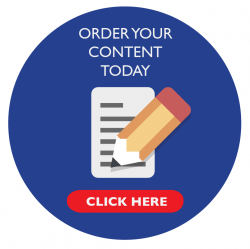With the intense competition for businesses that promote online, the web content you use to talk about your company has to be easily digestible. Here are some key tips for killer site content.
- Strong info hierarchy. Before typing your first letter, ask yourself whether the headers on your site are in the right order and easy to find. Depending on the type of company you have, do some research to determine what information people want to know first. If your concept is really complicated, make sure your “About Us” page is within easy reach (i.e. Should what you’re doing come before why you’re doing it?). Today’s app generation is also very impatient; if you’re going to boast about a feature, make sure the reader can act on it immediately by sprinkling calls to action throughout your home page.
- Consistency. This is your credibility. There needs to be one style and format to all of your text. If you’re switching from American to British English and the tones of each subject are different, it’s going to look like your content was farmed out to freelancers around the world. If you remember from our article “What is a content strategy”, this doesn’t mean just one blog and that’s it! A content strategy refers to how your content looks as an entire body of work.
- Break it up, people. Do you ever just read the first line of a paragraph and wish the rest of it never existed? That normally happens when you have a “wall of words” – an unbroken piece of text that’s normally more than five lines long. This makes people automatically want to skip to the top or bottom of the page.
- One sentence paragraphs. The best part about writing for online compared to print, is we’re allowed to have one-sentence paragraphs.
That’s right, you can change the rules.
We went there.
- Fragments. Another cool thing about writing for web is you’re occasionally allowed to have sentence fragments because the web content should be conversational. Use these wisely, otherwise your blog is at risk of reading like a tumblr account.
- Economy of words. “So, there was this guy who had been going over to the back of the store to get boxes” vs “This guy got boxes”. Feel the difference? Imagine every time you’re writing for the internet, you get fined $1 per word. Use your words wisely, because the more wordy, the sooner your reader will lose interest.
- Killer headlines with keywords. We know, balancing between a catchy title and making your content SEO friendly is tricky, but if it comes down to the two, always pick a clicky title. Think about creative ways to phrase your story. Instead of “Speedo cup sales increase in China,” how about, “China’s economy isn’t the only thing getting bigger”?
- Connect. Write about issues that are concerning your audience and make sure your content connects with other people. Content isn’t just content anymore – your content can actually come alive. Don’t be shy to imbed posts, share, tweet at someone, and make it easy to connect your media.
- Make it easy to scan. Upon first skim, can the reader figure out who’s doing what, when, where and how? With first time bloggers, there is a tendency to yammer on about your internal thought process. That’s alright, just delete it all once you’ve figured out your point and place it at the top of your paragraph.
- Don’t miss a Call-To-Action. Now that you’ve proved you can truly help people, it’s your chance to direct people to the next step. Don’t let your reader leave the page without signing up, subscribing, sharing, commenting, clicking, or coming back.
Need help with your content? Drop a message to [email protected]

